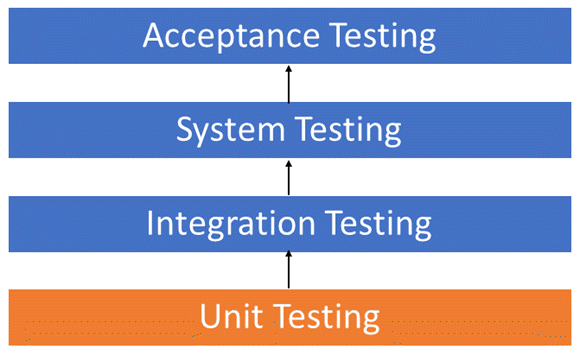What is Unit Testing?

What is Unit Testing?
Unit testing is a software testing method where individual units or components of code—such as functions, methods, or classes—are tested in isolation to verify they work correctly. The goal is to validate that the smallest pieces of an application behave as expected without dependencies on external systems.
A unit can be as small as a single function or as large as a small module, depending on how the software is designed. The key principle is isolation: external resources like databases, APIs, or file systems should be mocked or stubbed so the test focuses only on the unit’s logic.
For example, in Python:
def add (a, b): return a + b def test_add(): assert add(2, 3) == 5
This simple test checks whether the add function returns the correct result. While trivial, it demonstrates the idea: verify logic independently before integrating with the rest of the system.
By practicing unit testing, developers create a safety net that quickly detects regressions, supports refactoring, and improves software maintainability.
Unit Testing Video Explanation
Why perform Unit Testing?
Unit Testing is important because software developers sometimes try saving time by doing minimal unit testing, and this is a myth because inappropriate unit testing leads to a high cost of Defect fixing during System Testing, Integration Testing, and even Beta Testing after the application is built. If proper unit testing is done in early development, then it saves time and money in the end.

Here are the key reasons to perform unit testing in software engineering:
- Early bug detection – Problems surface close to where they’re introduced, making fixes faster and cheaper.
- Improved code quality – Clean, testable code often leads to better architecture and fewer hidden dependencies.
- Regression protection – Unit tests act as a safety net during refactoring, ensuring old features keep working.
- Faster development cycles – Automated tests shorten QA feedback loops and reduce manual testing overhead.
- Higher team confidence – With robust unit test coverage, developers deploy updates knowing they won’t break existing features.
In short: unit testing saves time, reduces risk, and improves reliability. It transforms testing from a painful afterthought into a proactive engineering practice.
How to Execute Unit Testing?
A reliable unit test flow is predictable, fast, and automated. Use this six-step loop to keep quality high and feedback rapid.
Step 1) Analyze the Unit & Define Cases
Identify the smallest testable behavior. List happy paths, edge cases, and error conditions. Clarify inputs/outputs and pre/postconditions.
Step 2) Set Up the Test Environment
Pick the framework, load minimal fixtures, and isolate dependencies (mocks/stubs/fakes). Keep setup lightweight to avoid slow, brittle tests.
Step 3) Write the Test (AAA Pattern)
Arrange the inputs and context → Act by calling the unit → Assert the expected outcome. Prefer behavior assertions over internal implementation details.
# Arrange
cart = Cart(tax_rate=0.1)
# Act
total = cart.total([Item("book", 100)])
# Assert
assert total == 110
Step 4) Run Locally & in CI
Execute tests on your machine first; then run in CI for a clean environment check. Fail fast; keep logs concise and actionable.
Step 5) Diagnose Failures, Fix, and Refactor
When a test fails, fix the code or the test, not both at once. After green, refactor with confidence—tests guard behavior.
Step 6) Rerun, Review, and Maintain
Re-run the full suite. Remove flaky tests, deduplicate fixtures, and enforce coverage thresholds without gaming them. Tag slow tests to run less frequently.
Pro Tips:
- Keep tests fast (<200 ms each) and independent.
- Name tests for behavior (e.g.,
test_total_includes_tax). - Treat flakiness as a bug; quarantine, fix the root cause, then re-enable.
What are the Different Unit Testing Techniques?
Unit tests are most effective when they mix smart test design techniques with sensible coverage goals. Aim for breadth where it matters, depth where risk is highest, and resist the “100% or bust” trap.
The Unit Testing Techniques are mainly categorized into three parts:
- Black box testing that involves testing of the user interface, along with input and output
- White box testing involves testing the functional behaviour of the software application
- Gray box testing is used to execute test suites, test methods, and test cases, and perform risk analysis
Coverage is a leading indicator, not the finish line. Use it to find blind spots, not to game the number. Code coverage techniques used in Unit Testing are listed below:
- Statement Coverage
- Decision Coverage
- Branch Coverage
- Condition Coverage
- Finite State Machine Coverage
For more on Code Coverage, refer https://www.guru99.com/code-coverage.html
What is the Role of Mocking and Stubbing in Unit Testing
Unit tests should focus only on the code under test — not its dependencies. That’s where mocks and stubs come in. These “test doubles” replace real objects so you can isolate behavior, control inputs, and avoid slow or flaky tests.
Why Use Test Doubles?
- Isolation – Test only the unit, not the database, network, or filesystem.
- Determinism – Control outputs and side effects so results are consistent.
- Speed – Tests run in milliseconds when they don’t touch external systems.
- Edge case simulation – Easily mimic errors (e.g., API timeout) without waiting for them in real life.
Stubs
A stub is a simplified replacement that returns a fixed response. It doesn’t record interactions — it just provides canned data.
Example (Python):
def get_user_from_db(user_id):
# Imagine a real DB call here
raise NotImplementedError()
def test_returns_user_with_stub(monkeypatch):
# Arrange: stubbed DB call
monkeypatch.setattr("app.get_user_from_db", lambda _: {"id": 1, "name": "Alice"})
# Act
user = get_user_from_db(1)
# Assert
assert user["name"] == "Alice"
Mocks
A mock is more powerful: it can verify interactions (e.g., “was this method called with X?”).
Example (JavaScript with Jest):
const sendEmail = jest.fn();
function registerUser(user, emailService) {
emailService(user.email, "Welcome!");
test("sends welcome email", () => {
// Arrange
const user = { email: "test@example.com" };
// Act
registerUser(user, sendEmail);
// Assert
expect(sendEmail).toHaveBeenCalledWith("test@example.com", "Welcome!");
});
Here, the mock checks that the email service was called correctly — something a stub can’t do.
Common Pitfalls
- Over-mocking – If every collaborator is mocked, tests become brittle and tied to implementation details.
- Testing mocks instead of behavior – Focus on outcomes (state/return values) over interactions when possible.
- Leaking setup code – Keep mocks/stubs lightweight; use helpers or fixtures for readability.
Rules of Thumb
- Stub when you just need data.
- Mock when you need to verify interactions.
- Prefer fakes over heavy mocks when you can (e.g., in-memory DB instead of mocking every query).
Bottom line: Mocking and stubbing are supporting actors, not the stars. Use them to isolate your unit, but don’t let them hijack the test suite.
Which are the Common Unit Testing Tools?
There are several automated unit test software available to assist with unit testing in software testing. We will provide a few examples below:
- JUnit: Junit is a free-to-use testing tool used for the Java programming language. It provides assertions to identify the test method. This tool tests the data first and then inserts it into the piece of code.
- NUnit: NUnit is a widely used unit-testing framework for all .NET languages. It is an open-source tool that allows writing scripts manually. It supports data-driven tests, which can run in parallel.
- PHPUnit: PHPUnit is a unit testing tool for PHP programmers. It takes small portions of code, which are called units, and tests each of them separately. The tool also allows developers to use predefined assertion methods to assert that a system behaves in a certain manner.
Those are just a few of the available unit testing tools. There are lots more, especially for C languages and Java, but you are sure to find a unit testing tool for your programming needs, regardless of the language you use.
Test Driven Development (TDD) & Unit Testing
Unit testing in TDD involves an extensive use of testing frameworks. A unit test framework is used in order to create automated unit tests. Unit testing frameworks are not unique to TDD, but they are essential to it. Below, we look at some of what TDD brings to the world of unit testing:
- Tests are written before the code
- Rely heavily on testing frameworks
- All classes in the applications are tested
- Quick and easy integration is made possible
Here are some benefits of TDD:
- Encourages small, testable units and simple designs.
- Prevents over-engineering; you build only what the test demands.
- Provides a living safety net for refactors.
Expert Advice: Choose TDD when you want tight design feedback at the code level and rapid, incremental progress on units.
Why Integrate Unit Tests into CI/CD?
Unit tests deliver the most value when they’re wired directly into the continuous integration and continuous delivery (CI/CD) pipeline. Instead of being an afterthought, they become a quality gate that automatically validates every change before it ships.
Here are the reasons to integrate unit tests into CI/CD pipelines:
- Immediate feedback – Developers know within minutes if their change broke something.
- Shift-left quality – Bugs are caught at commit time, not after release.
- Confidence in deployments – Automated checks ensure that “green builds” are safe to push.
- Scalable collaboration – Teams of any size can merge code without stepping on each other.
Unit Testing Myth
Here are some common myths for Unit Testing:
“It requires time, and I am always overscheduled. “My code is rock solid! I do not need unit tests.”
Myths by their very nature are false assumptions. These assumptions lead to a vicious cycle as follows –
Truth is, Unit testing increases the speed of development.
Programmers think that Integration Testing will catch all errors and do not execute the unit test. Once units are integrated, very simple errors that could have been easily found and fixed in unit testing take a very long time to be traced and fixed.
Unit Testing Advantage
- Developers looking to learn what functionality is provided by a unit and how to use it can look at the unit tests to gain a basic understanding of the unit API.
- Unit testing allows the programmer to refactor code at a later date and make sure the module still works correctly (i.e., Regression testing). The procedure is to write test cases for all functions and methods so that whenever a change causes a fault, it can be quickly identified and fixed.
- Due to the modular nature of the unit testing, we can test parts of the project without waiting for others to be completed.
Unit Testing Disadvantages
- Unit testing can’t be expected to catch every error in a program. It is not possible to evaluate all execution paths, even in the most trivial programs
- Unit testing by its very nature focuses on a unit of code. Hence, it can’t catch integration errors or broad system-level errors.
It’s recommended that unit testing be used in conjunction with other testing activities.
Unit Testing Best Practices
- Unit Test cases should be independent. In case of any enhancements or changes in requirements, unit test cases should not be affected.
- Test only one code at a time.
- Follow clear and consistent naming conventions for your unit tests
- In case of a change in code in any module, ensure there is a corresponding unit Test Case for the module, and the module passes the tests before changing the implementation
- Bugs identified during unit testing must be fixed before proceeding to the next phase in SDLC
- Adopt a “test as your code” approach. The more code you write without testing, the more paths you have to check for errors.
FAQs
Summary
Unit testing is the foundation of modern software quality. By verifying code at the smallest level, it prevents defects from spreading, accelerates development, and gives teams the confidence to ship faster.
When combined with proven practices — like the AAA pattern, thoughtful techniques, coverage goals, and CI/CD integration — unit tests evolve from simple checks into a living safety net that grows with your codebase.
But balance is key. Avoid over-testing trivial code, over-mocking dependencies, or chasing vanity metrics like 100% coverage. Instead, focus effort on critical business logic, reusable components, and high-risk areas, where tests deliver the biggest return.
In short, unit testing is not just about writing tests — it’s about building a culture of trust, maintainability, and continuous improvement. Teams that invest in it reap long-term benefits: fewer bugs, cleaner code, and smoother releases.


